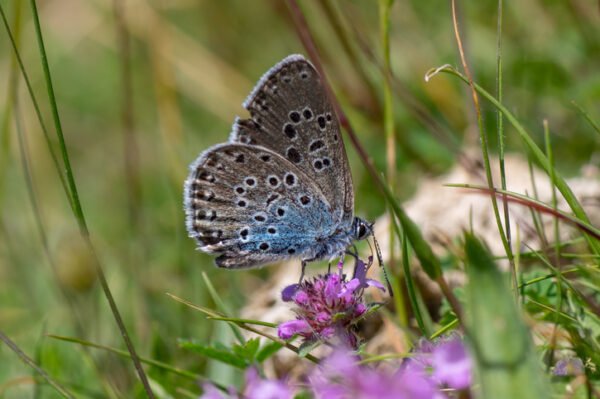‘It’s surprising that numbers were even lower than during the cold, wet and thoroughly miserable summer of 2012, as this summer’s weather was distinctly better. Sure, the sunny weather was patchy: the far north-west enjoyed a fine spring and the south-east a good late summer, but the bulk of the UK suffered regular periods of poor weather, at least until the weather stabilised in mid-August.
‘The species that declined most this year either spend the winter as hibernating butterflies, like the Peacock and Small Tortoiseshell, or as hibernating larvae, like the Gatekeeper and Meadow Brown. This suggests that the unseasonal mild and wet winter had a big impact on the numbers that hibernated successfully. It’s also likely that predators and diseases were not checked by cold winter weather.
‘Additionally, some of the butterflies that fared poorly this year breed on low plants growing in pockets of bare ground amongst taller vegetation, such as the Small Copper and Common Blue. The mild winter and wet spring ensured that ground vegetation – especially coarse grasses – grew rampantly, covering the bare ground pockets containing the butterflies’ diminutive food plants resulting in food shortages.
‘The good news is that 36,000 people contributed to Big Butterfly Count, which shows that people care deeply about our butterfly fauna. Had counts taken place 40 years ago, during the long hot summer of 1976, the data would show how horrifically our common butterflies have declined – by orders of magnitude. Our base line for valuing butterfly abundance has shifted downwards.
‘At the National Trust we care for many of the UK’s top butterfly localities, so butterflies are high up on our agenda. And we want to see more butterflies in our farmed countryside, and in our gardens.
‘Perhaps our butterflies now need a traditional cold winter, as well as more scientific research and more recorders.’
MATTHEW OATES
National Trust’s butterfly expert
 Play Video about This Rock Might Just Save The World
Play Video about This Rock Might Just Save The World Play Video about Play 2 hours of rock
Play Video about Play 2 hours of rock Play Video about Play 2 hours of brook
Play Video about Play 2 hours of brook Play Video about Play 2 hours of sheep
Play Video about Play 2 hours of sheep












































